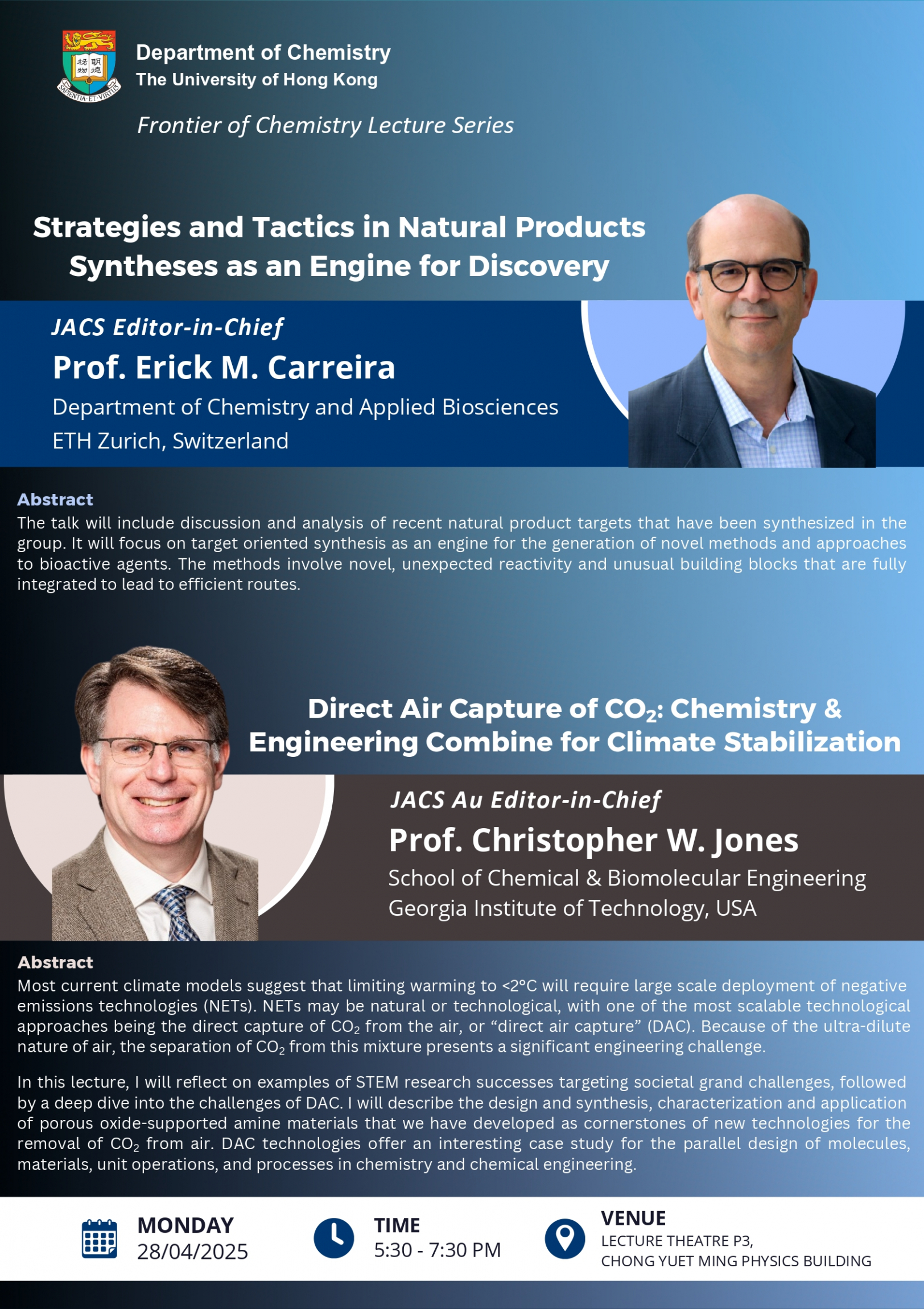| Date | 28 Apr 2025 |
| Time | 5:30 pm - 7:30 pm (HKT) |
| Venue | Lecture Theatre P3, Chong Yuet Ming Physics Building |
| Speaker | Professor Erick Carreira & Professor Christopher Jones |

Schedule:
Date: 28th April, 2025 (Monday)
Time: 5:30 - 7:30 pm (HKT)
Venue: Lecture Theatre P3, Chong Yuet Ming Physics Building
------------------------------------------------------
Title:
Strategies and Tactics in Natural Products Syntheses as an Engine for Discovery
Speaker:
JACS Editor-in-Chief
Prof. Erick M. Carreira
Department of Chemistry and Applied Biosciences
ETH Zurich, Switzerland
Abstract
The talk will include discussion and analysis of recent natural product targets that have been synthesized in the group. It will focus on target oriented synthesis as an engine for the generation of novel methods and approaches to bioactive agents. The methods involve novel, unexpected reactivity and unusual building blocks that are fully integrated to lead to efficient routes.
------------------------------------------------------
Title:
Direct Air Capture of CO2: Chemistry & Engineering Combine for Climate Stabilization
Speaker:
JACS Au Editor-in-Chief
Prof. Christopher W. Jones
School of Chemical & Biomolecular Engineering
Georgia Institute of Technology, USA
Abstract
Most current climate models suggest that limiting warming to <2°C will require large scale deployment of negative emissions technologies (NETs). NETs may be natural or technological, with one of the most scalable technological approaches being the direct capture of CO2 from the air, or “direct air capture” (DAC). Because of the ultra-dilute nature of air, the separation of CO2 from this mixture presents a significant engineering challenge.
In this lecture, I will reflect on examples of STEM research successes targeting societal grand challenges, followed by a deep dive into the challenges of DAC. I will describe the design and synthesis, characterization and application of porous oxide-supported amine materials that we have developed as cornerstones of new technologies for the removal of CO2 from air. DAC technologies offer an interesting case study for the parallel design of molecules, materials, unit operations, and processes in chemistry and chemical engineering.
- - ALL ARE WELCOME - -
